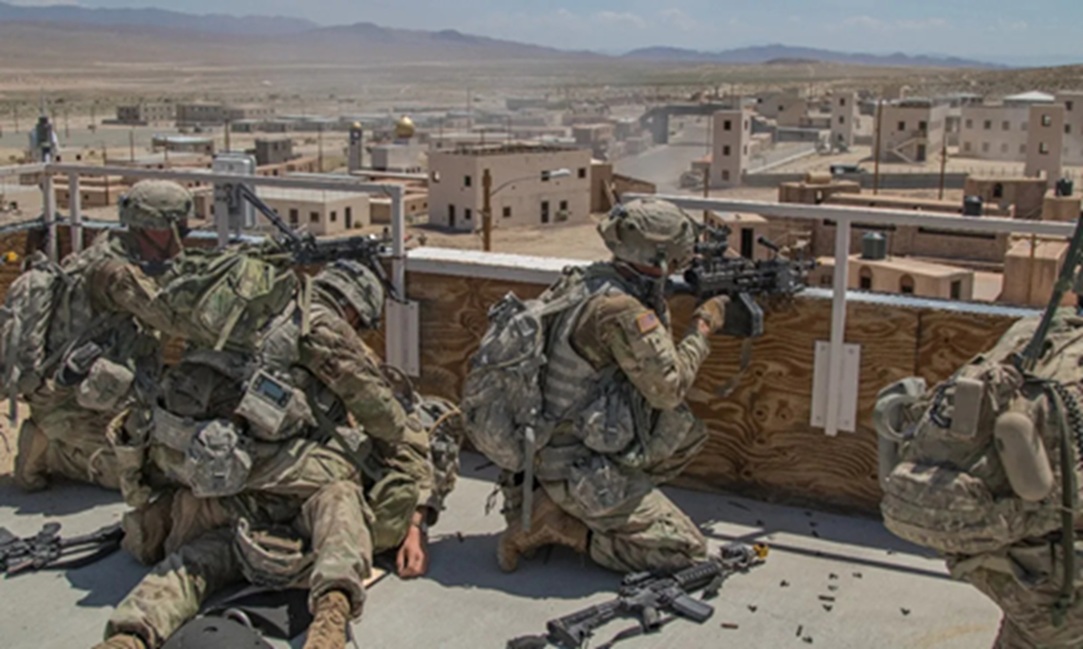Maintaining air superiority over the Indo-Pacific region is absolutely necessary for India to preserve its hegemony over the other nations in the region. Induction of High Altitude Long-Endurance (HALE) or Medium Altitude Long-Endurance (MALE) UAVs would be essential to undertake seamless surveillance over the vast expanse of Indo-Pacific oceans and over the land mass. MQ 9A ‘Reaper’ appears to be a perfect fit for this mission.
The Defence Acquisition Council (DAC) of India, led by Defence Minister Rajnath Singh, approved the acquisition of 31 US-manufactured Remotely Piloted Aircraft Systems (RPAS) for 3 billion USD. Eight each for the Air Force and Indian Army and the rest for the Indian Navy. The initial plan was to source 18 RPAs from the US and the balance from DRDO. Later DAC could confirm the inability of DRDO in delivering indigenous RPAS on time and hence decided to go for induction of all the 31 RPAs from the US. Details of the contract is still awaited. This induction decision may be a huge setback to the efforts of DRDO, which has been trying to manufacture high-end military RPAS for the last 20 years. The acquisition and deployment of MQ 9 will be done in a phased manner.
Indian Navy has gone a step ahead by inducting two General Atomics make MQ-9B SeaGuardian drones on lease from the US to familiarise the systems and operations. These UAVs are capable of carrying out surveillance for more than 30 hours between refuelling and are currently operating out of Indian Navy’s INS Rajali airbase near Chennai. These two drones arrived in India on Nov 2020 and are on lease till Jan 2024. These RPAs have completed 10,000 hours of flying so far for various security missions. These drones have helped out existing P8I aircraft in various missions.
Since this new purchase deal could be a mix of MQ 9A Reaper, MQ 9B SeaGuardian, MQ and 9B SkyGuardian catering for the requirement of all three armed forces, let us compare their operational capabilities and characteristics.
General Profile
General Atomics Aeronautical Systems is an affiliate of General Atomics and is the leading manufacturer of military UAV systems, radars, and electro-optics in the world. MQ 9 A/B are designed for long-endurance surveillance, reconnaissance and precision strike capabilities. The Predator series Remotely Piloted Aircraft (RPA) of General Atomics is one of the most successful military UAVs with more than seven million flying hours. The multi-role capabilities of MQ-9 have attracted the attention of Indian military commanders leading to the short-listing of RPAS by DAC. The combination of armaments that can be carried by this RPAS includes AGM-114 Hellfire (Air to Ground Missiles), GBU-12 Paveway II (Airborne Laser-Guided Bomb), GBU-38 Joint Direct Attack Munitions(Bomb Guidance Kit), GBU-49 Enhanced Paveway II ( Enhanced Dual-mode GPS and Laser Guided Bomb), and GBU-54 Laser Joint Direct Attack Munitions (Guidance Kit for Bombs). The subject platform can be operated and controlled by two remote crews (pilot and sensor/weapon operator). It can even be dismantled and transported using aircraft to remote locations for operations. The RPAS may be transferred into India without a weapon package/contract initially.
MQ-9A Reaper
Reaper is a sophisticated multi-mission RPA powered by a turboprop engine. It has evolved out of the experience gained by General Atomics from the battle-proven Predator RPA. ‘Reaper’ is also widely known as Predator B.
MQ-9A has an endurance of over 27 hours and a top speed of speeds of 240 Knots/ 445 Kmph and a ceiling height of 50,000 feet/15.25 Kms. Has an All up Weight of 3,850 pounds/1.746 tons which includes 3,000 pounds/1.361 tons of external stores/ weapons/ payloads. MQ-9A is equipped flight control system and triple redundant avionics system architecture. It has seven external stations for the carriage of payloads and has C-Band line-of-sight data link control with a Ku-Band Beyond Line-of-Sight (BLOS)/SATCOM data link control.
It is engineered to meet and exceed manned aircraft reliability standards and powered with Honeywell TPE331-10 turboprop which has great performance standards and high fuel efficiency at low altitudes. Modular design can accommodate varied payloads to meet all multi-missions including Electro-optical/Infrared (EO/IR), Multi-Mode Maritime Surveillance Radar, Electronic Support Measures (ESM), Laser Designators and a variety of weapons payloads. The basic characteristics of ‘Reaper’ is given below.
| Wing Span: | 66 ft (20m) |
| Length: | 36 ft (11m) |
| Powerplant: | Honeywell TPE331-10 |
| Max Gross Takeoff Weight: | 10,500 lb (4763 kg) |
| Fuel Capacity: | 3,900 lb (1769 kg) |
| Weapon Payload Capacity: | 850 lb int. (386 kg) 3,000 lb ext. (1361 kg) |
| Payloads: | MTS-B EO/IR Lynx Multi-mode Radar Multi-mode maritime radar Automated Identification System (AIS) SIGINT/ESM system Communications relay |
| Power: | 11.0 kW/45.0 kVA (Block 5) (redundant) |
MQ-9A has evolved over the years to meet customers’ emerging needs with extended range and retrofittable capabilities such as wing-borne fuel pods and a new reinforced landing gear which has helped Reaper to increase the endurance from 27 hours to 34 hours with operational flexibility. U.S. Air Force, U.S. Department of Homeland Security, NASA, the Royal Air Force, the Italian Air Force, the French Air Force and the Spanish Air Force are operating MQ 9A.
MQ-9B SeaGuardian
MQ-9B SeaGuardian is designed for all-weather maritime operations and can be safely flown through civil airspace protocols over vast expanses of oceans. SeaGuardian is designed to meet the STANAG 4671 standards for NATO cross-platform operations and data exchange. It can be exploited by joint forces and even civil authorities to gather real-time situational awareness all weather day or night. This UAV can undertake seamless reconnaissance using long-range maritime radar, ESM, an Automatic Identification System (AIS) and a top-notch self-contained Anti-Submarine Warfare (ASW) mission kit for underwater surveillance. It has an endurance of more than 30 hours and can be controlled by satellite links beyond the horizon across the globe.
SeaGuardian has outstanding (ISR) capabilities and is the first RPAS in its class which can undertake ASW operations. The open architecture of SeaGuardian has the option to integrate sonobuoys dispensers and process sonar signatures received from deployed sonobuoys like any other manned ASW platforms. The platform can deploy, monitor and control sonobuoys.
SeaGuardian has four wing stations available to carry upto four sonobuoys dispensing pods and can dispense upto 80 ‘G’ size or 40 ‘A’ size sonobuoys. SeaGuardian’s range extends to a mission radius of 1200 nautical miles with significant on-station time for submarine hunting. This platform is a challenge to human-crewed ASW aircraft and can act as a perfect buddy to a crewed ASW aircraft for long missions. SeaGuardian can undertake the following maritime operations.
- Search and Rescue
- Humanitarian Assistance and Disaster Relief at High Seas
- Maritime Law Enforcement
- Anti-Surface Warfare
- Anti-Submarine Warfare
- Airborne Mine Counter Measures
- Long-Range Strategic ISR
- Over-the-Horizon Targeting
The main characteristics of SeaGuardian RPA are placed below (Data Courtesy: General Atomics).
Wingspan: 79 Ft/ 24 m
Length: 38 Ft /11.7 m
Power Plant Honeywell: Tpe331-10 Turboprop
Max Gross Takeoff Weight: 12,500 Lb /5,670 Kg
Fuel Capacity: 6,000 Lb/ 2,721 Kg
Payload Capacity: 800 Lb/ 363 Kg (Internal)
Payload Capacity: 4,750 Lb/2155 Kg (External)
Nine External Hardpoints: 8 Wing-Mount, 1 Centerline
Power 45 Kva Backup Power 2 kW
MQ-9B SkyGuardian
MQ-9B SkyGuardian is a next-generation RPA with ISR (Intelligent Surveillance and Reconnaissance) and is designed to fly up to 40+ hours in all types of weather. The first military UAV integrated with civil airspace protocols for flying in civil airspace like other commercial aircraft apart from NATO standards (STANAG 4671). It can deliver real-time situational awareness anywhere in the world—day or night. The aircraft is outfitted with the revolutionary Lynx Multi-mode Radar, an advanced electro-optical/infra-red (EO/IR) sensor, and automatic take-off and landing with a wingspan more than its predecessors at 24 meters.

SkyGuardian provides enhanced payload capacity and an open architecture system that enables the aircraft to integrate the most advanced sensor payloads for intelligence gathering, survivability, and even kinetic payloads for more complex operational environments. In addition to endurance and surveillance capabilities, SkyGuardian can integrate other platforms, and systems and has podded integration to expand the platform’s multi-domain mission sets. SkyGuardian features nine hardpoints, eight under wings and one in the belly with a max 2155 kg external payload capacity. It can undertake the following military missions
- Border Surveillance
- Long-Range Strategic ISR
- Over-the-Horizon Targeting
- Support Defensive and Counter Air Operations
- Airborne Early Warning
- Electronic Warfare (ESM/ECM/ECCM Capable)
- Anti-Surface Warfare (SeaGuardian mission kit)
- Anti-Submarine Warfare (SeaGuardian mission kit)
- Airborne Mine Counter Measures (SeaGuardian mission kit)
- Humanitarian Assistance/Disaster Relief
- Search and Rescue
Basic Characteristics
It has similar characteristics to MQ 9B Seaguardian.
Tailpiece
The real challenge for the armed forces would be the exploitation of RPAS post-induction. Logistics and maintenance support for MQ 9A Reaper are major factors in the seamless exploitation of these platforms. Interoperability and data exchange with existing Russian and Indian systems is another challenge for the Armed Forces which cannot be undermined. DRDO can certainly speed up their Rustom RPAS project by learning from MQ 9A/B. Exploring possibilities of integration of native missiles and bombs would certainly narrow the dependency on the US for weapons.
Title image courtesy: The Drive
Disclaimer: The views and opinions expressed by the author do not necessarily reflect the views of the Government of India and Defence Research and Studies






